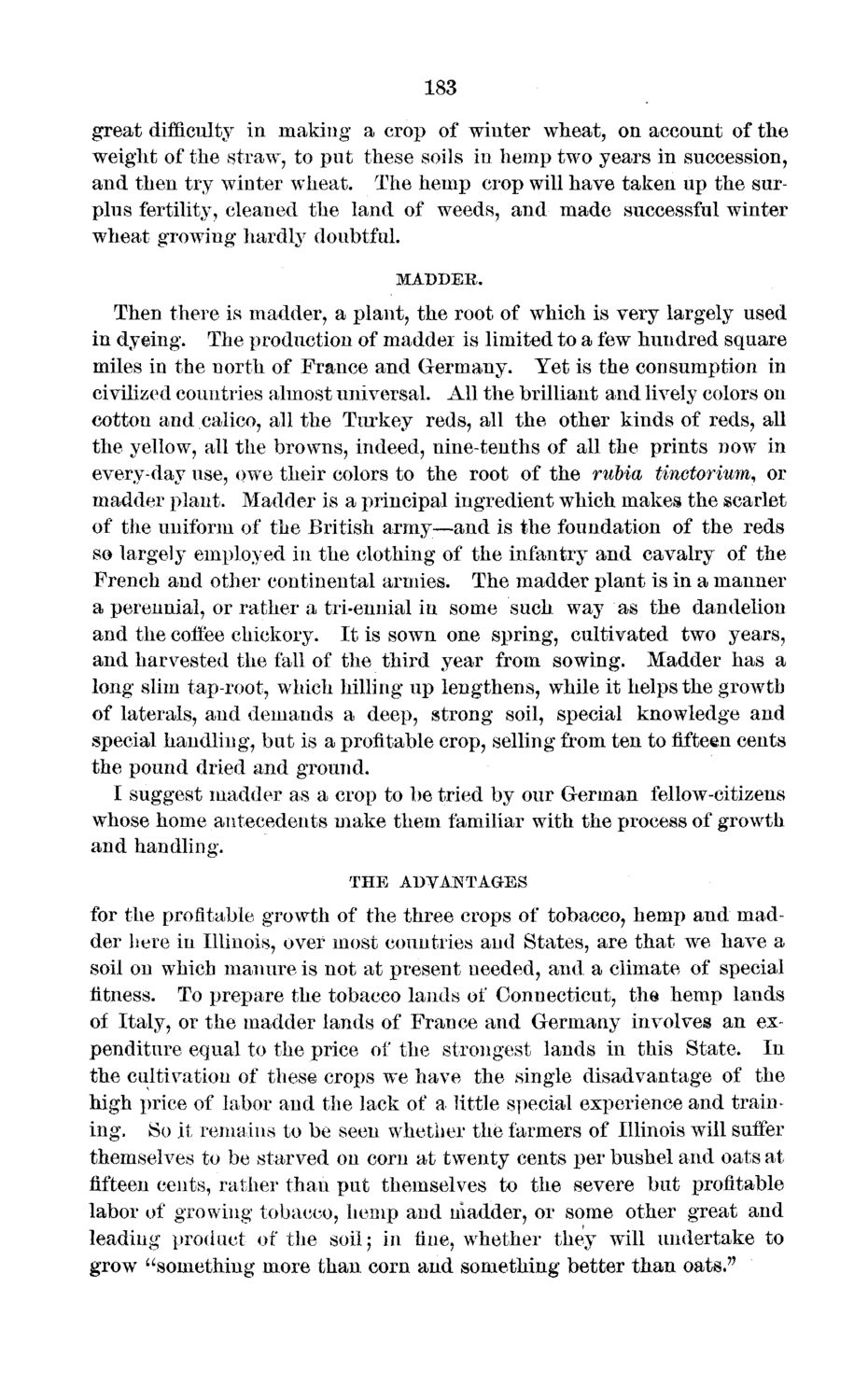| |
| |
Caption: Board of Trustees Minutes - 1873
This is a reduced-resolution page image for fast online browsing.

EXTRACTED TEXT FROM PAGE:
183 great difficulty in making a crop of winter wheat, on account of the weight of the straw, to put these soils in hemp two years in succession, and then try winter wheat. The hemp crop will have taken up the surplus fertility, cleaned the land of weeds, and made successful winter wheat growing hardly doubtful. MADDER. Then there is madder, a plant, the root of which is very largely used in dyeing. The production of madder is limited to a few hundred square miles in the north of France and Germany. Yet is the consumption in civilized countries almost universal. All the brilliant and lively colors on cotton and calico, all the Turkey reds, all the other kinds of reds, all the yellow, all the browns, indeed, nine-tenths of all the prints now in every-day use, owe their colors to the root of the rubia tinctorium, or madder plant. Madder is a principal ingredient which makes the scarlet of the uniform of the British army—and is the foundation of the reds so largely employed in the clothing of the infantry and cavalry of the French and other continental armies. The madder plant is in a manner a perennial, or rather a tri-ennial in some such way as the dandelion and the coffee chickory. It is sown one spring, cultivated two years, and harvested the fall of the third year from sowing. Madder has a long slim tap-root, which hilling up lengthens, while it helps the growth of laterals, and demands a deep, strong soil, special knowledge and special handling, but is a profitable crop, selling from ten to fifteen cents the pound dried and ground. I suggest madder as a crop to be tried by our German fellow-citizens whose home antecedents make them familiar with the process of growth and handling. THE ADVANTAGES for the profitable growth of the three crops of tobacco, hemp and madder here in Illinois, over most countries and States, are that we have a soil on which manure is not at present needed, and a climate of special fitness. To prepare the tobacco lands of Connecticut, the hemp lands of Italy, or the madder lands of France and Germany involves an expenditure equal to the price of the strongest lands in this State. In the cultivation of these crops we have the single disadvantage of the high price of labor and the lack of a little special experience and training. So if remains to be seen whether the farmers of Illinois will suffer themselves to be starved on corn at twenty cents per bushel and oats at fifteen cents, rather than put themselves to the severe but profitable labor of growing tobacco, hemp and madder, or some other great and leading product of the soil; in fine, whether they will undertake to grow "something more than corn and something better than oats."
| |